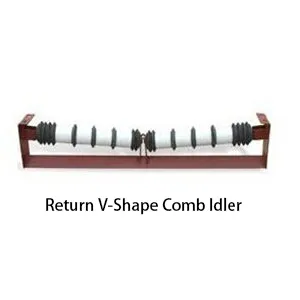 Afrikaans
Afrikaans  Albanian
Albanian  Amharic
Amharic  Arabic
Arabic  Armenian
Armenian  Azerbaijani
Azerbaijani  Basque
Basque  Belarusian
Belarusian  Bengali
Bengali  Bosnian
Bosnian  Bulgarian
Bulgarian  Catalan
Catalan  Cebuano
Cebuano  Corsican
Corsican  Croatian
Croatian  Czech
Czech  Danish
Danish  Dutch
Dutch  English
English  Esperanto
Esperanto  Estonian
Estonian  Finnish
Finnish  French
French  Frisian
Frisian  Galician
Galician  Georgian
Georgian  German
German  Greek
Greek  Gujarati
Gujarati  Haitian Creole
Haitian Creole  hausa
hausa  hawaiian
hawaiian  Hebrew
Hebrew  Hindi
Hindi  Miao
Miao  Hungarian
Hungarian  Icelandic
Icelandic  igbo
igbo  Indonesian
Indonesian  irish
irish  Italian
Italian  Japanese
Japanese  Javanese
Javanese  Kannada
Kannada  kazakh
kazakh  Khmer
Khmer  Rwandese
Rwandese  Korean
Korean  Kurdish
Kurdish  Kyrgyz
Kyrgyz  Lao
Lao  Latin
Latin  Latvian
Latvian  Lithuanian
Lithuanian  Luxembourgish
Luxembourgish  Macedonian
Macedonian  Malgashi
Malgashi  Malay
Malay  Malayalam
Malayalam  Maltese
Maltese  Maori
Maori  Marathi
Marathi  Mongolian
Mongolian  Myanmar
Myanmar  Nepali
Nepali  Norwegian
Norwegian  Norwegian
Norwegian  Occitan
Occitan  Pashto
Pashto  Persian
Persian  Polish
Polish  Portuguese
Portuguese  Punjabi
Punjabi  Romanian
Romanian  Russian
Russian  Samoan
Samoan  Scottish Gaelic
Scottish Gaelic  Serbian
Serbian  Sesotho
Sesotho  Shona
Shona  Sindhi
Sindhi  Sinhala
Sinhala  Slovak
Slovak  Slovenian
Slovenian  Somali
Somali  Spanish
Spanish  Sundanese
Sundanese  Swahili
Swahili  Swedish
Swedish  Tagalog
Tagalog  Tajik
Tajik  Tamil
Tamil  Tatar
Tatar  Telugu
Telugu  Thai
Thai  Turkish
Turkish  Turkmen
Turkmen  Ukrainian
Ukrainian  Urdu
Urdu  Uighur
Uighur  Uzbek
Uzbek  Vietnamese
Vietnamese  Welsh
Welsh  Bantu
Bantu  Yiddish
Yiddish  Yoruba
Yoruba  Zulu
Zulu return idler roller
Understanding Return Idler Rollers Key Components in Conveyor Systems
In industrial settings, efficient material handling plays a crucial role in productivity and operational cost management. Conveyor systems have become a staple in various industries such as manufacturing, mining, and distribution, where the need for transporting materials is constant. Within these systems, one of the essential components that often goes unnoticed but is vital for smooth operation is the return idler roller.
What is a Return Idler Roller?
Return idler rollers are components of a conveyor system that support the weight of the conveyor belt while it returns to its original position after delivering its load. Typically located underneath the conveyor belt, these rollers play a crucial role in maintaining the belt’s alignment and reducing wear and tear during operation. They ensure that the conveyor belt runs smoothly over its entire length, thereby preventing damage to both the belt and associated equipment.
Functions of Return Idler Rollers
1. Support and Stability The primary function of return idler rollers is to provide support to the conveyor belt on its return journey. By maintaining proper alignment, these rollers ensure that the belt does not sag or become misaligned, which could lead to operational problems.
2. Reduction of Friction Idler rollers help in reducing friction between the conveyor belt and the surface beneath it. This is vital because excessive friction can lead to increased wear on the belt and energy losses, ultimately impacting the operational efficiency of the conveyor system.
3. Load Distribution As materials are transported along the conveyor system, return idler rollers assist in distributing the load evenly across the belt. This helps in preventing localized wear and prolongs the overall lifespan of the conveyor belt.
4. Facilitation of Material Flow Properly functioning return idler rollers ensure that materials can flow freely and efficiently along the conveyor system. This is particularly important in high-volume operations where delays can lead to significant productivity losses.
return idler roller

Types of Return Idler Rollers
Return idler rollers come in various designs to cater to different conveyor system requirements. Some common types include
- Flat Return Idlers These are the simplest form of return idlers, characterized by their flat surface. They are commonly used in light-duty applications.
- Trough Return Idlers With a curved design, trough return idlers help in keeping the conveyor belt in place, especially under heavier loads. They are ideal for bulk material handling operations.
- Self-Aligning Return Idlers These rollers automatically adjust to the belt’s path, which is particularly useful in environments where belt misalignment is likely to occur.
Maintenance of Return Idler Rollers
To ensure efficient operation, regular maintenance of return idler rollers is essential. Operators should routinely inspect these rollers for signs of wear, misalignment, or damage. Lubrication is also crucial in minimizing friction and prolonging the life of the idler rollers. By addressing issues early on, businesses can avoid costly downtime and repairs.
Conclusion
Return idler rollers may be small components in the grand scheme of conveyor systems, but their importance cannot be overstated. They provide necessary support and stability, reduce friction, facilitate load distribution, and ensure the smooth flow of materials. Understanding the functions and types of return idler rollers is essential for operators looking to enhance the efficiency of their conveyor systems. Investing in quality idler rollers and adhering to a regular maintenance schedule will not only prolong equipment life but also contribute to overall operational success. As industries continue to evolve, so too will the technology and design surrounding these essential components, ensuring that they meet the ever-increasing demands of modern material handling.
-
Revolutionizing Conveyor Reliability with Advanced Rubber Lagging PulleysNewsJul.22,2025
-
Powering Precision and Durability with Expert Manufacturers of Conveyor ComponentsNewsJul.22,2025
-
Optimizing Conveyor Systems with Advanced Conveyor AccessoriesNewsJul.22,2025
-
Maximize Conveyor Efficiency with Quality Conveyor Idler PulleysNewsJul.22,2025
-
Future-Proof Your Conveyor System with High-Performance Polyurethane RollerNewsJul.22,2025
-
Driving Efficiency Forward with Quality Idlers and RollersNewsJul.22,2025





























